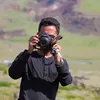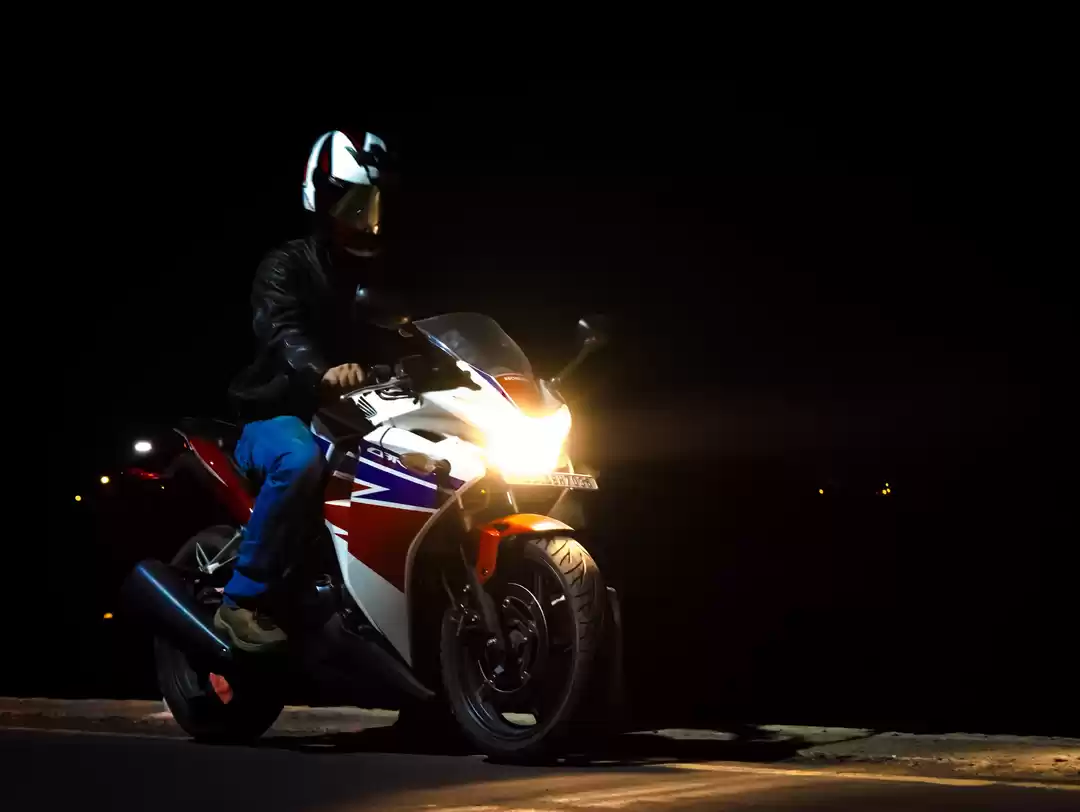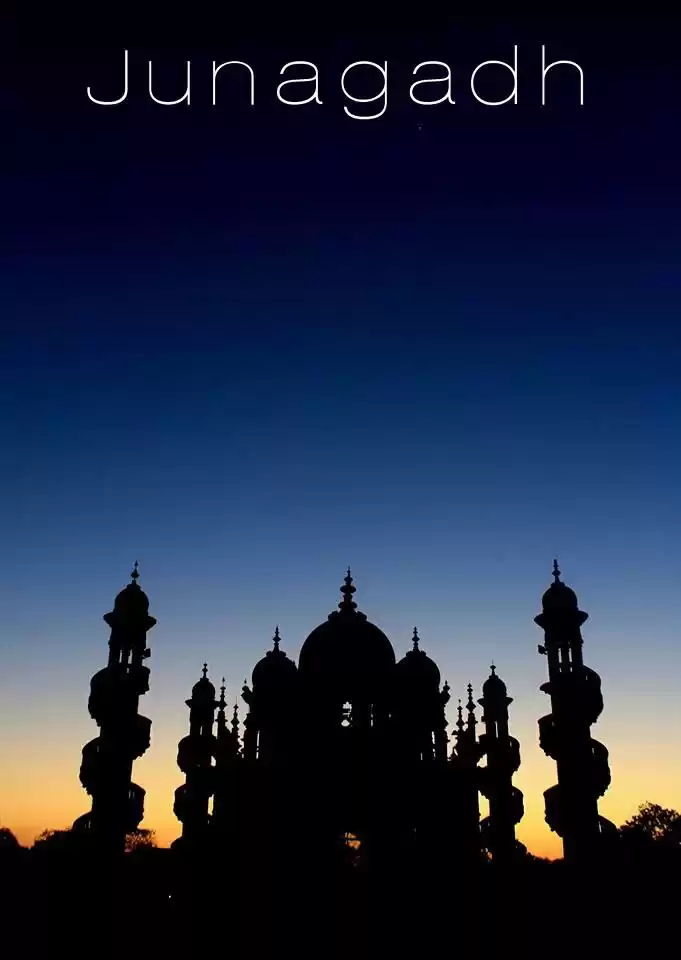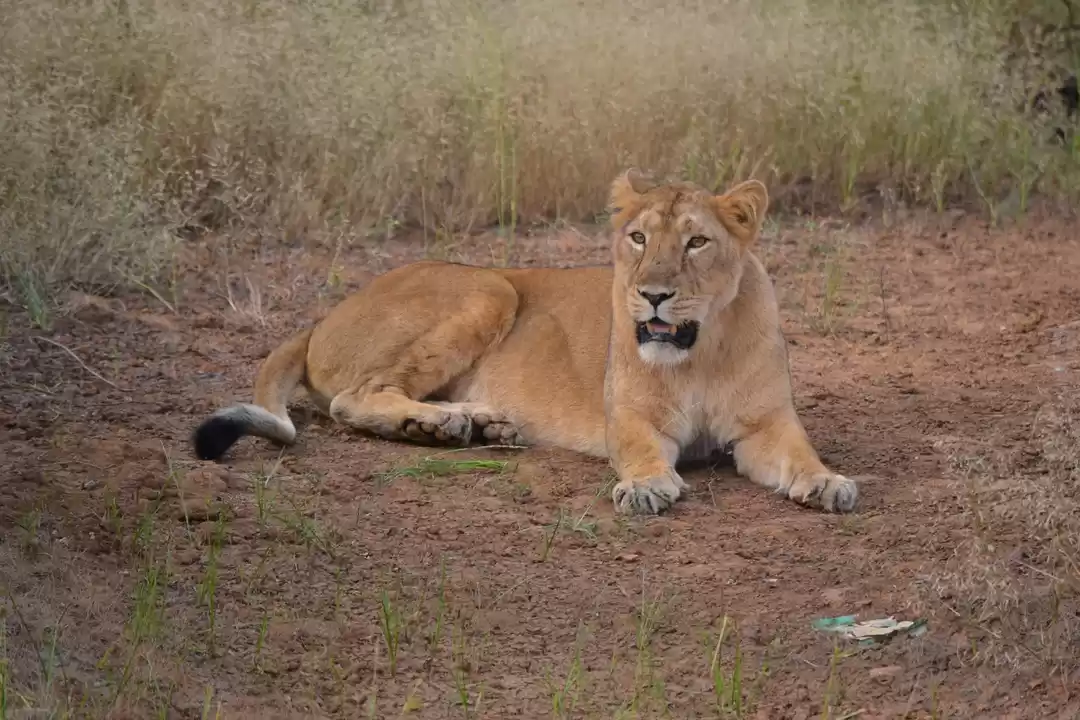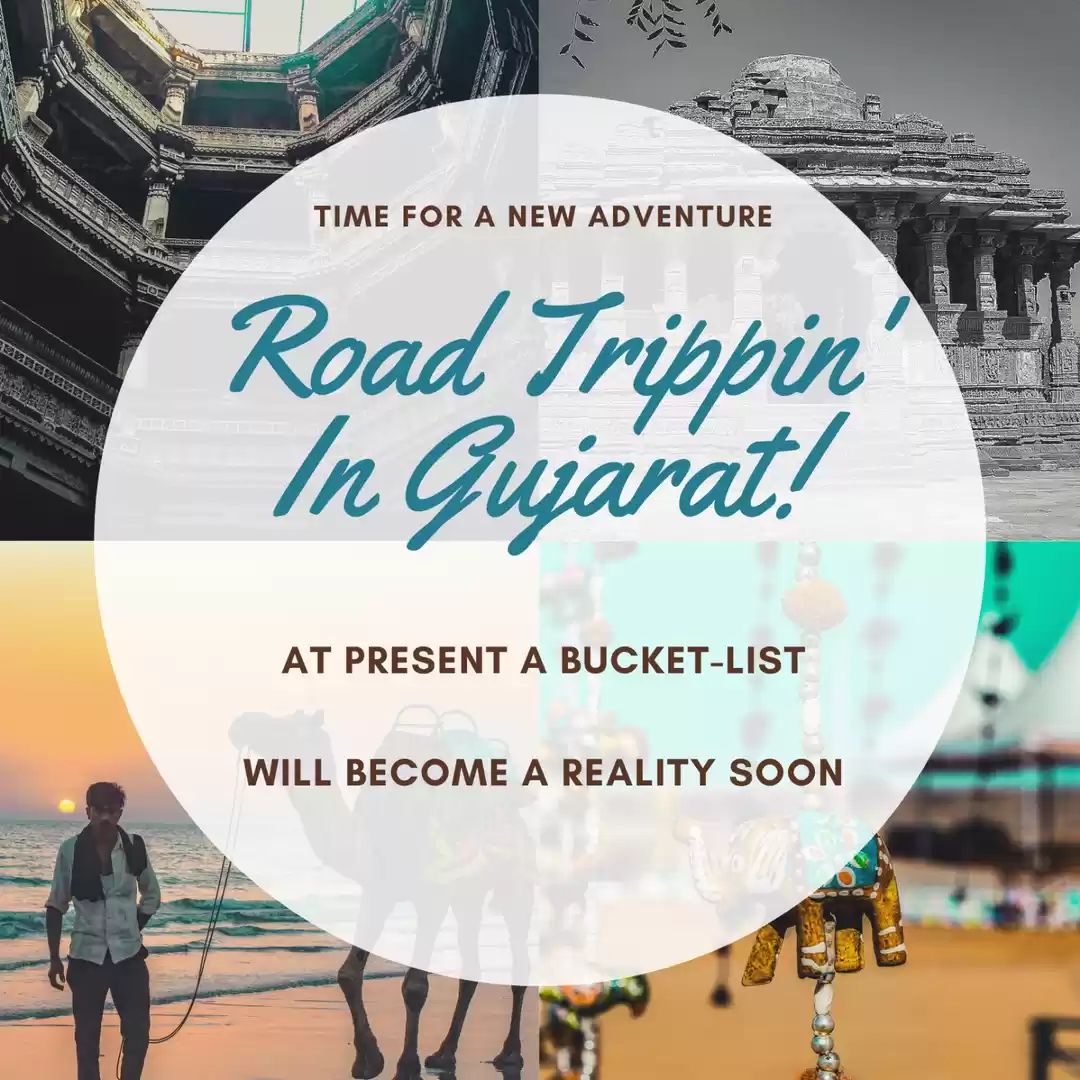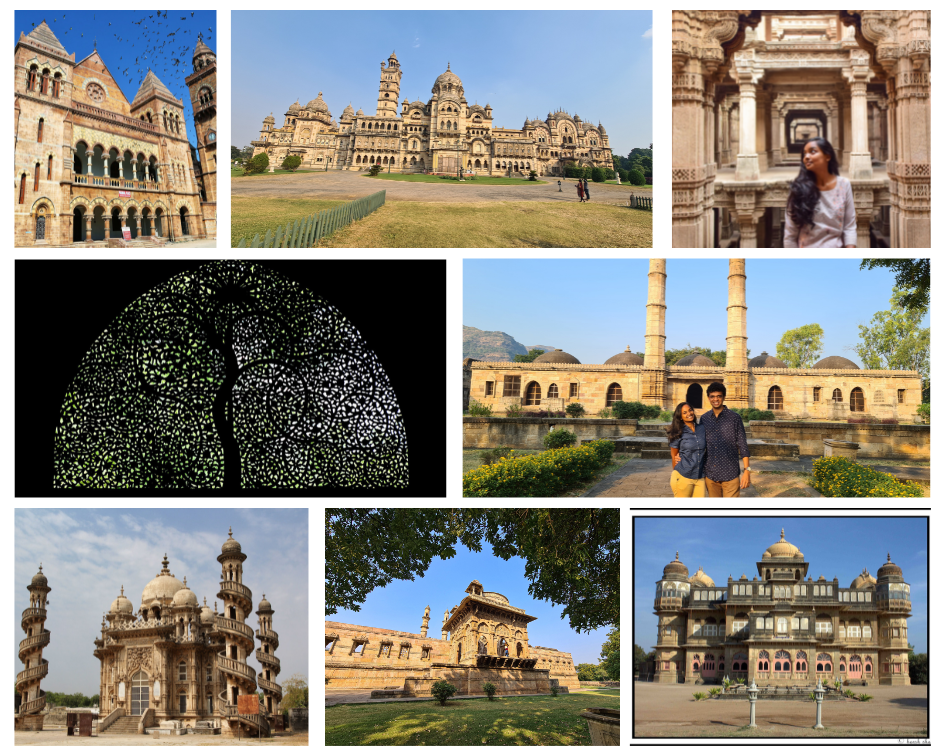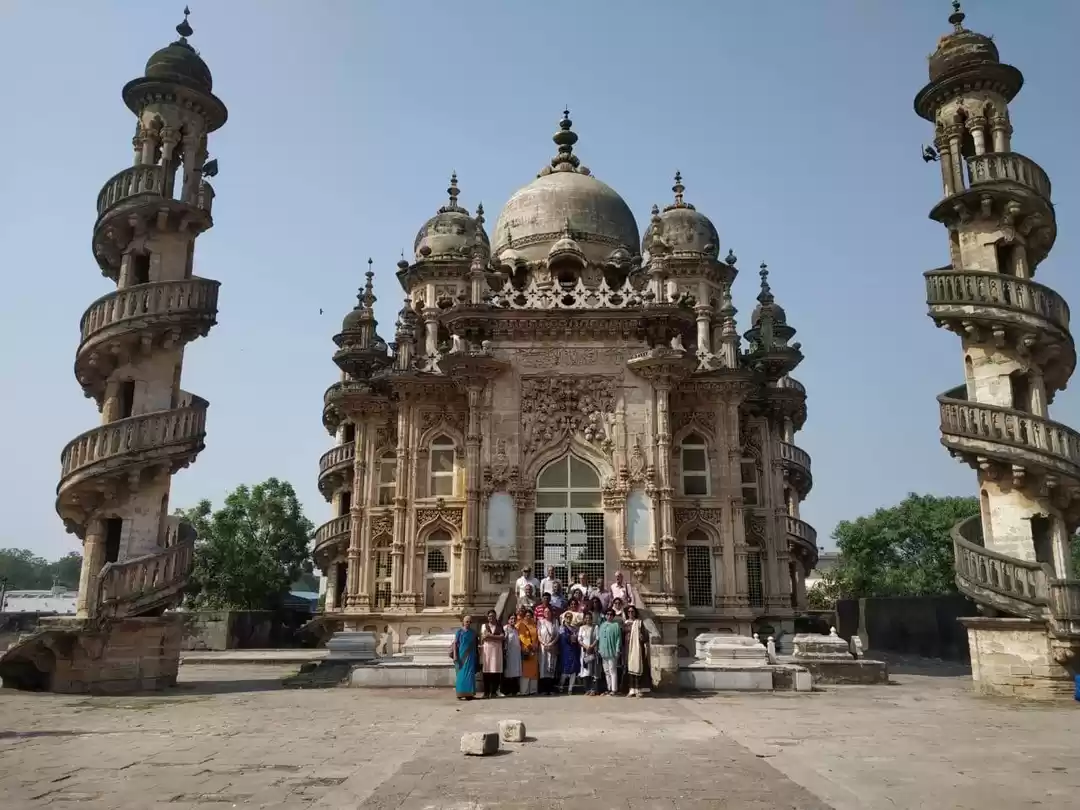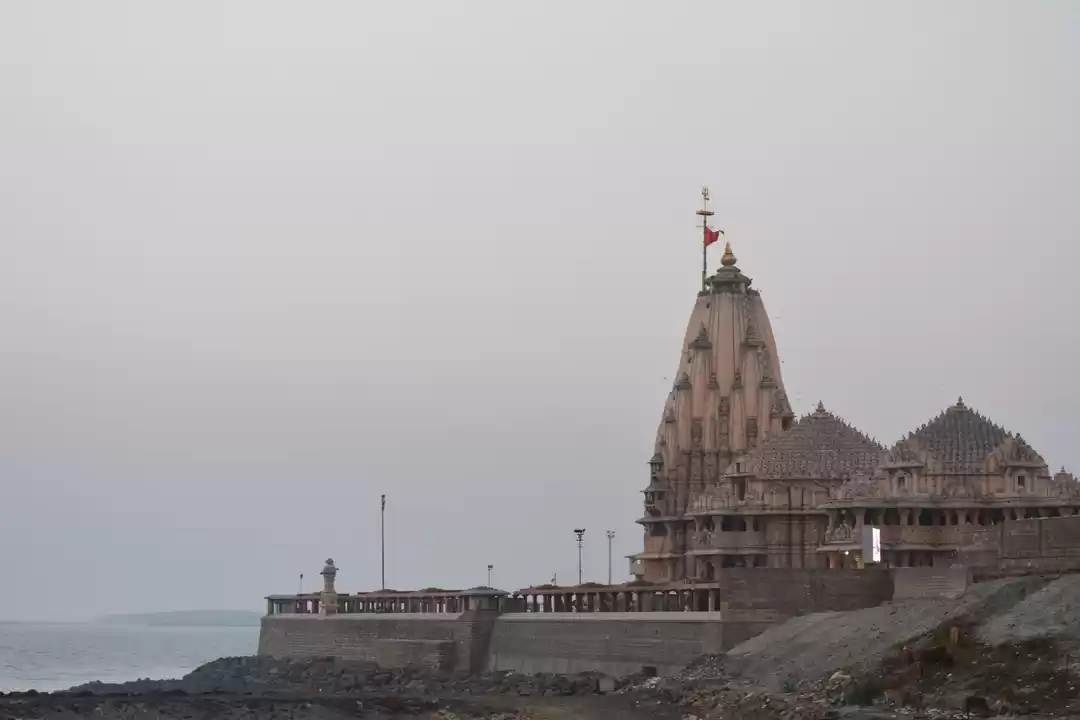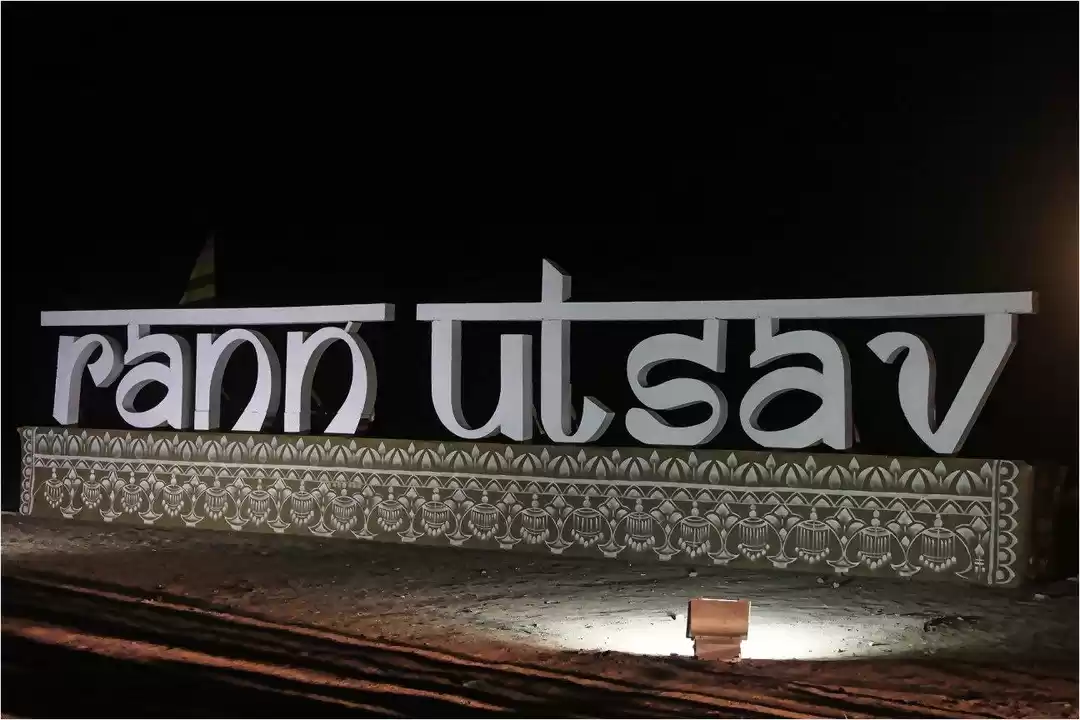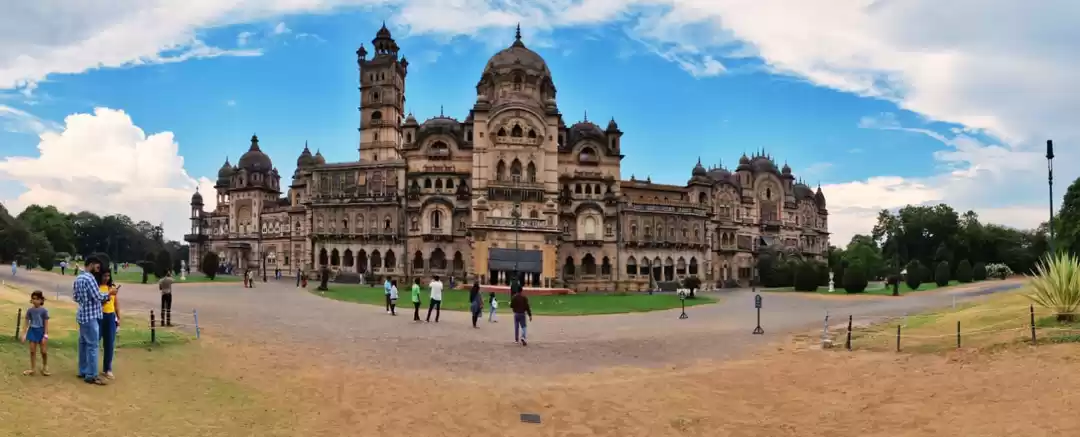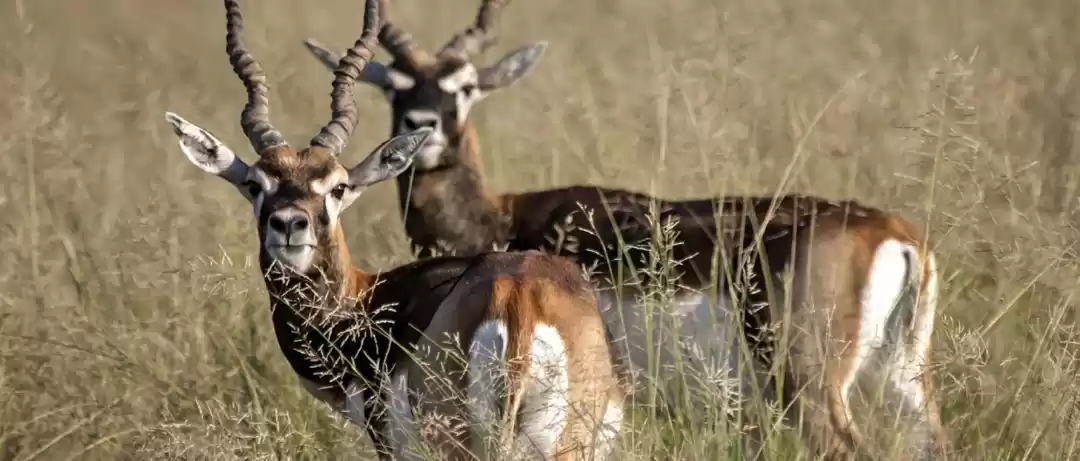Diwali, the festival of lights is a time when the entire country celebrates with their friends and family members at home. It’s a time for revelry, candles and crackers. We (a group of 5 friends) wanted to do it differently. We wished to be away from the noise and pollution that had engulfed our daily existence and the best way to do that is to go for a road-trip. After a couple of brainstorming sessions via Skype we zeroed in to the Mumbai – Gujarat route as we wanted to see the majestic Asiatic Lions in its natural habitat. Mumbai was selected to be the base location where we start and end our trip. Some research on the places to visit and the distances between them showed that we needed to cover about 2000 kilometers in less than 4 full days and that was daunting. But the lure of the unknown was such that we did not think twice before embarking on this trip.

Planning:
As already mentioned, we decided Mumbai to be the starting point and so we booked a self-drive rental car online with pick-up at Mumbai. Although we had a lot of options we chose a Toyota Etios from MyChoize cars over the more well-known names like Zoomcar and Myles. There were two reasons for it:
1. It offered us unlimited kilometers at no extra cost. We just needed to pay for the fuel and the rental (No charges for extra kilometers which would have been significant in our case)
2. It was cheaper as compared to the other established players
The next step was to get the route fixed. There were couple of places like Gir and Lothal which we had to cover and we created our itinerary based on those points. The route map we followed is shown below:
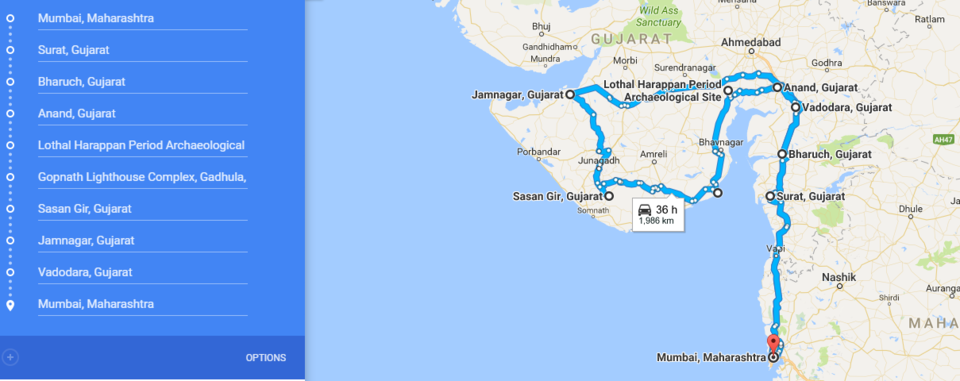
The Journey:
Day 1: Mumbai – Gopnath (via Surat, Bharuch, Lothal, Bhavnagar)
We started our trip from Mumbai early morning at about 3 A.M. By starting so early we had planned to cover a good amount of distance before the morning traffic slowed us down. Just as we crossed the limits of the “city of dreams” and picked up speed on NH48 we could feel the difference in the quality of roads. A spanking 6 lane highway with small hillocks on both sides and we were cruising at more than 120 kmph under the starry night sky. We crossed towns like Vapi, Silvasa on the way. Our first stop was to be the city of Surat situated about 285 kms from our starting point. We covered the distance in a little more than 4 hours and we stopped for breakfast in Surat at about 7:30 A.M. After a light breakfast consisting of Gujrati delicacies like Khaman Dhokla and a steaming cup of freshly brewed caffeine we were back on the road enroute Lothal. We halted at Anand on the way for a quick lunch. Anand is a small industrial town which is famous for the Amul factory located there. We reached Lothal at about 3:30 in the afternoon. The road from Anand to Lothal was not as good as the previous roads and the increased number of vehicles also slowed us down.
Lothal:
Lothal was one of the most prominent cities of the ancient Indus valley civilisation, located in the Bhāl region of the modern state of Gujarat and dating from 3700 BCE. Discovered in 1954, Lothal was excavated between 13 February 1955 and 19 May 1960 by the Archaeological Survey of India (ASI). Lothal's dock, the world's earliest known, connected the city to an ancient course of the Sabarmati river on the trade route between Harappan cities in Sindh and the peninsula of Saurashtra when the surrounding Kutch desert of today was a part of the Arabian Sea. It was a vital and thriving trade centre in ancient times, with its trade of beads, gems and valuable ornaments reaching the far corners of West Asia and Africa. Although very little ruins exist today we can get a glimpse of the amazing sanitation system for which the Indus Valley Civilization is famous for. There are also remains of the dockyard and a warehouse. The Archeological Museum consists of a large cache of antiques right from animal figures, red clay pottery, beads and chess board like figures similar to the ones found in Egypt. Lothal made us feel like the pages of our school history books have come alive.
After immersing ourselves in ancient Indian history, we left Lothal at around 5 in the evening for the tiny town of Gopnath located in the Talaja Taluka of the Bhavnagar district in Gujarat. The road from Talaja town to Gopnath was one of the most eerie roads that I have ever driven on. It was pitch dark with no mobile or GPS connectivity. Miles and miles of empty dark roads made us feel we were driving towards the gates of hell at 3 AM in the night although it was barely 9 PM. One particularly eerie sight was witnessed by us when the car headlamp illuminated the path ahead and we saw a ragged old man sitting in the middle of the road and gesturing to someone where there was no one present in the vicinity. We decided not to think about it too much although some people in the car started praying for safety from so called supernatural forces. We reached Gopnath at around 10 at night.

Gopnath:
We had booked a couple of rooms at the Gopnath Bungalow, a seashore retreat of the royal family of Bhavnagar. Built in European colonial style with cottages and mansions surrounding a courtyard, the whole complex faces the sea. The tidal waves here are among the largest in the world. Blessed with lovely white sand beaches it is a nature lover’s paradise with a huge number of birds visible. The property has a feeling of a haunted site but it is exquisitely beautiful and serene. The staff was very welcoming and treated us to a sumptuous dinner. After the hearty meal we sat at the courtyard looking up at the clear night sky with innumerable stars. We even managed to spot a couple of meteors. That night was one of the most fulfilling nights in a long time relaxing under the night sky with the sound of the crashing waves and the occasional cackle of a wild hyena.


I woke up early next morning to see the first glimpse of the morning sun and I surely did not regret the effort. I managed to capture wonderful images of the crimson sky and breathed in the pure morning breeze. Overall it was an experience which is both thrilling and fulfilling. Gopnath Bungalow is really recommended.

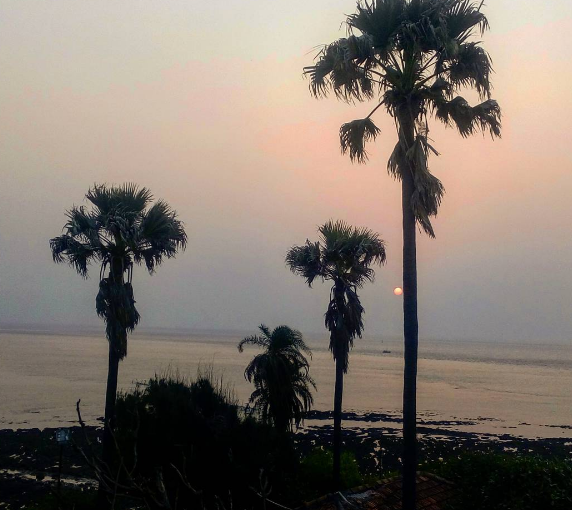
Day 2: Gopnath – Gir
We had an early breakfast the next morning after which we bid adieu to the scenic Gopnath bungalow and we were on our way to the main attraction, The Gir National park. Gir is situated at a distance of about 190 kms from Gopnath and the expected travel time was about 4 hours due to the condition of the roads but we were in for a major surprise. Google Maps, one of our most trusted aides in nearly all of our travels screwed up this time. As we neared the forested area it started behaving funnily and suddenly we were at one of the exits of the national park but the way was open only for pedestrians. On the other side of the gate we saw a small forest office so we decided to investigate. We parked the car and walked past the gate and read a board indicating we were entering the core area. What we saw next made our hair stand on end, there this abandoned office with no one in the vicinity, but the tap was on and there were shoes lying around. We were really intrigued and spooked. We also began speculating wild theories about a lion attack. Just as we were figuring things out a couple of forest guards came from nowhere and told us that we were in a restricted part of the forest and we should leave asap. They also told us the exact way and we finally reached our destination Sasan Gir at about 4 in the evening.
Gir National Park:
The Gir Forest National Park and Wildlife Sanctuary is a forest and wildlife sanctuary near Talala Gir. Established in 1965, with a total area of 1,412 km2 for the fully protected area of the national park and 1,153 km2 for the Sanctuary. The park is located 43 km north-east of Somnath and 65 km south-east of Junagadh.
It is the sole home of the Asiatic lion in the wilderness, and is considered to be one of the most important protected areas in Asia due to its supported species. The ecosystem of Gir, with its diverse flora and fauna, is protected as a result of the efforts of the government forest department, wildlife activists and NGOs. The forest area of Gir were the hunting grounds of the Nawabs of Junagadh. However, faced with a drastic drop in the lion population in Gir, Nawab Sir Muhammad Rasul Khanji Babi declared Gir as a "protected" area in 1900. His son, Nawab Muhammad Mahabat Khan III later assisted in the conservation of the lions whose population had plummeted to only 20 through slaughter for trophy hunting
We had booked our stay at the Anil Farmhouse located on the bank of Hiran River and surrounded by meadows of Gir Forest. After grabbing a quick snack we went to the river banks to spot a number of lazing wild Mugger crocodiles and a number of avian fauna. We spent the evening surveying the beautiful mango orchards at the resort immersed in coffee and conversations.

Day 3: Jungle Safari: Gir – Junagadh – Vadodara
When the shrill alarm woke us up next morning it was still dark and chilly outside. The resort kitchen was still closed but our caretaker offered us cups of tea to kick-start our senses. Soon we were on our way for the most anticipated part of the trip, the jungle safari. Olive green jeeps from the forest department picked us up from the resort itself and after collecting our passes we entered the main gate of the jungle at 6 AM. The sun was just rising in the eastern horizon when we made our way through the narrow jungle path over multiple shrubs and an occasional stream. We spotted a number of animals including a herd of deer, few wild boars and a beautiful peacock. But the lion was still elusive. We had nearly given up hope and our safari was nearly over when we finally got a glimpse of a pride of magnificent Asiatic lions. We managed to click a couple of shots although they were a bit far. We ended the safari satisfied, returned to resort, packed our stuff, grabbed a bite and were on our way to Junagadh located on the foothills of the Girnar hills at a distance of about 80 kms from Sasan Gir.


Junagadh:
Junagadh city is the headquarters of Junagadh district. The city is the 7th largest in Gujarat, located at the foot of the Girnar hills, 355 km south west of state capital Gandhinagar and Ahmedabad. Literally translated, Junagadh means "Old Fort". An alternate etymology gives the name as coming from "Yonagadh", literally "City of the Yona (Greeks)," referring to the ancient inhabitants of the city under the Indo-Greek Kingdom. It is also known as "Sorath", the name of the earlier Princely State of Junagadh. After a brief struggle between India and Pakistan, Junagadh joined India on 9 November 1947. It was a part of Saurashtra state and later Bombay state. In 1960, after the Maha Gujarat movement, it became part of newly formed Gujarat state.

Junagadh is a must for history buffs and there are many locales of immense historical importance including the Uparkot fort located on a plateau in the middle of town, originally built during the Mauryan times by Chandragupta Maurya in 319 BCE. The fort remained in use until the 6th century, when it was abandoned for some 300 years, then rediscovered in 976 CE. The fort was besieged 16 times over an 800-year period
There is also the the Mahabat Maqbara a stunning mausoleum of Nawab Mahabat Khan III which has similarities with the Taj Mahal of Agra.

We started from Junagadh in the evening at about 5:30 and reached Vadodara at about 1 AM after a grueling 7 hour drive. This stretch was the longest I drove in this journey at a go but the roads were amazing and I understood what the hoopla about Gujarat’s infrastructure was all about. Yes it is the best in India. We rested for the night at a hotel we had already booked.

Day 4: Vadodara- Mumbai
We did not have nothing much to do on the last day and we started the last leg of the journey rejuvenated and energized after a good night’s sleep. Although it was a long stretch of about 410 Kms the runway quality roads made sure that the driving experience was pleasurable one. We reached Mumbai in the evening at about 6 thereby ending a tiring but an amazing and fulfilling roadtrip in the Western side of the country
Important Information:
1. Travel:
Car Rental: My Choize cars: https://mychoize.com
Rent: Rs 2200 per day plus Fuel
2. Stay:
Day 1: Gopnath Bungalow : http://www.gujarattourism.com/hotel/details/340 (Recommended)
Day 2: Hotel Anil FarmHouse: http://www.girjungleresort.com/
Day 3: Pride Biznotel Vadodara ( Check MakeMyTrip for options)

